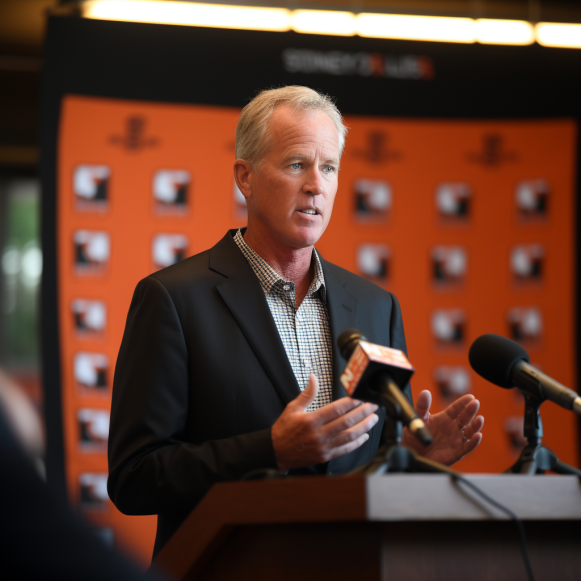Hotline mailbag: Detailing the Pac-12’s liabilities, the ‘Pac-2’ and the MW, future of the NW rivalries, CFP rules, Bay Area regret and more
The conference is staring at tens of millions in liabilities, but which schools will be on the hook?
Every Friday, the Hotline mailbag is published. Send questions to pac12hotline@bayareanewsgroup.com with the subject line’mailbag’. Or follow me on Twitter at @WilnerHotline.
Please keep in mind that some of the questions have been edited for clarity and brevity.
Can you explain the ‘liabilities’ issue within the Pac-12 fight? What exactly are the liabilities the 10 outbound schools are trying to stick the two remaining schools with? — @metalhumdrum
We’ll begin with this topic because it has received the least amount of attention in the Pac-12 legal battle but is inextricably linked to the fight over revenue and assets.
What are the dangers? How serious is the financial risk? And which schools will be held accountable?
For months, the Hotline has attempted to narrow down the list of liabilities, but none of our contacts are certain. The lawyers are most likely
have a good grasp on the situation, but their knowledge is limited.
the mediation — and nobody is talking about it.
Here’s our best guess:
- **** Comcast**
Comcast is withholding $72 million in distributions to the conference, according to Commissioner George Kliavkoff’s statement in court filings earlier this year. According to a source, the amount can be divided into two categories:— Distributions withheld by Comcast to offset ten years of overpayments (2013-22) based on the company’s flawed tracking of Pac-12 Networks subscribers. This amounts to $58 million.— Distribution cuts in the fiscal years 2023-24 to account for a correction in subscriber figures. The total amount is $14 million.
Timing is everything: The withholding and reduction (total: $6)
million per school) are currently underway and will be completed before the
The current fiscal year has come to an end. This liability will be gone by next summer for Washington State and Oregon State.
- **** Dish**
The conference has filed a lawsuit against DISH Network for failing to make distribution payments and violating the terms of its agreement with the Pac-12 Networks.
What is the source of the disagreement? The COVID-shortened 2020 football season, caused by the Pac-12 Networks’ inability to meet contractual obligations to their distributors. Dish, unlike the other partners, is attempting to use COVID to justify deferring payments for an additional year.
Based on our reporting and court documents, the Hotline believes that approximately $10 million is at stake.
- **** Wrongful termination**
Former Pac-12 Networks president Mark Shuken and former CFO Brent Willman have sued the conference, claiming they were wrongfully terminated (in January) for their roles in the Comcast overpayment scandal.
The plaintiffs seek damages “in amounts to be established at trial and believed to be in excess of $2 million,” according to the complaint.
- **** Holiday Bowl**
Due to a string of positive COVID tests, UCLA backed out of the 2021 Holiday Bowl (against North Carolina State) hours before kickoff.
In May, the bowl’s governing body filed a lawsuit, naming the Pac-12 and the UC Board of Regents as defendants, in response to threats from both sides. It is seeking at least $3 million in monetary damages.
- **** San Ramon**
Kliavkoff committed to office space in the Bay Area city of San Ramon for Pac-12 Networks production studios before securing the conference’s media rights deal.
According to information gathered from sources and court documents, the lease payment is approximately $2 million per year for at least five years, and it began this summer.
This amounts to approximately $10 million in total, with only one year covering the time when all 12 schools compete together.
- **** Kliavkoff’s contract/other expenses**
The terms of Kliavkoff’s contract have not been disclosed by the conference. However, assuming he signed a five-year contract and using figures from Pac-12 tax filings, it’s reasonable to conclude that he would have $7.2 million remaining on his deal at the end of the current fiscal year.
That could change if he’s fired for cause (i.e., gross negligence), but such a move would almost certainly spark another.
wrongful termination suit.
Not to mention the costs associated with the Pac-12’s employee retention and severance plan, as well as any operational expenses that may creep into the fiscal year 2024-25.
- **** NCAA lawsuits**
Damages resulting from antitrust lawsuits against the NCAA are the most difficult liability to detail. One case in particular could expose the Pac-12 to hundreds of millions of dollars in financial exposure.
According to court documents reported by USA Today, the suit seeks $1.4 billion in damages related to name, image, and likeness, and damages are tripled in antitrust cases.
Along with the NCAA, the Pac-12, ACC, Big 12, Big Ten, and SEC are defendants.
The Hotline has no idea how House will turn out, so we’ll remove it from the list of liabilities. Also, let us go back.
The schools agreed to remove the Comcast withholdings from the tally, and the process is now underway.
What is your best guess? The conference’s liabilities are estimated to be around $35 million.That works out to about $3 million per campus when divided by 12.
That’s a ton divided in two.
If the ‘Pac-2’ indeed retains control after an appeal, what is the most realistic outlook for the 2023-24 media rights revenue shares? — @Cargoman0363
ESPN, Fox, and the Pac-12 Networks have distribution deals in place until the spring. The money will flow regardless of the lawsuit as long as the Pac-12 delivers the required inventory.
How much is it? According to legal filings, the revenue figure for the current competition year is $420 million, or $35 million per campus if divided equally.
Even if they win the legal battle, Washington State and Oregon State will not take everything. That would [return them to court.
We believe that a settlement is the best solution, with the ten departing schools receiving $25 million (or so) and the two remaining schools using the extra revenue and long-term assets to fund their operations.
operations and make plans for 2024-25.
Should the Mountain West have any trepidation about the scheduling alliance with Oregon State and Washington State knowing that the ‘Pac-2’ might try to rebuild the conference with some of the MW’s best schools? — @Milkbear79
I’m sure some Mountain West schools are concerned about the ‘Pac-2’ poaching the best football programs in the MW, leaving others behind.
As a result, any schedule alliance will almost certainly include contractual safeguards for Utah State, San Jose State, Nevada, and New Mexico.
Mexico, for example.
A schedule partnership with the ‘Pac-2’ appears to be an easy call for the top-tier MW schools — those are quality home games for Fresno State, Boise State, and San Diego State — as long as the financial terms are acceptable.
After all, the Cougars and Beavers must make the deal worthwhile.
Is there any mood to continue state rivalries in the Pacific Northwest? It would be very easy to do if Oregon and Washington each drop a cupcake to help fill the OSU and WSU schedules. Or are feelings too raw? — @WorkishFromHome
To be sure, the emotions are running high, but cooler heads are working hard to keep the two in-state rivalries alive. The Hotline has been informed that the schools in Oregon and Washington are “close to reaching an agreement.”
Aside from the historical significance, the matches generate high TV ratings and are valuable to media companies.
I can’t promise that the Apple Cup and the game formerly known as the Civil War will be played next season, but the Hotline is confident that the rivalries will continue unabated.
Make a note of September 14, 2024. Washington has an opening on its schedule to play WSU, and Oregon is reportedly attempting to create one.
There seems to be differing information between you and Yahoo regarding the College Football Playoff’s ability to change the rule about requiring eight teams in a conference to get an automatic bid. Yahoo says it doesn’t require a board vote, but you’re saying it does. Who’s correct? — @eWrecK__
The simple answer was that there was some confusion about this aspect of CFP governance and whether the commissioners (i.e., the management committee) could make the change or whether it required a unanimous board vote (i.e., the presidents).
Our tale was based on a late-week interview with WSU president Kirk Schulz, a CFP board member.
CFP executive director Bill Hancock clarified to Yahoo’s Ross Dellenger late this week that the commissioners do have the authority to set the minimum requirement (eight teams) for automatic bids.
Keep in mind that everything about this is unprecedented. The CFP did not consider the possibility of a two-team conference when it established the selection policy a decade ago.
I hope this helps.
What is the CFP committee trying to protect against with the rule on how many teams are required for a conference to receive an automatic bid? Oregon State and Washington State will be a two-team conference for no more than two years. If they end the season ranked high enough, what’s the harm in them claiming the automatic bid? — @keithdennis
The disadvantage is that there are only 12 spots available in the expanded event, and each spot is worth tens of millions of dollars.
Those leagues believe there will be enough scheduling disparity that the Cougars and Beavers will not have access to the same games as Power Four champions.
At-large teams from the SEC, Big Ten, Big 12 and ACC will have one fewer berth if the ‘Pac-2’ winner receives an automatic bid.
Keep in mind that all of the changes apply to the seasons 2024 and 2025. There will be no policies in place when the CFP’s contract with ESPN expires in early 2026.
**How much do Oregon State and Washington State need from the
Pac-12’s remaining funds to buy their way into the Big 12 the same way Cal, Stanford and SMU bought their way into the ACC? — @bbm010**
There is no figure because the Big 12 has finished expanding, and anyone reporting otherwise is either misinformed or making things up.
Could things drastically change later this decade or in the early 2030s? The next round of media rights negotiations will, without a doubt, result in massive structural changes in the sport.
However, the Beavers and Cougars will not be able to enter the Power Four leagues for the time being.
The Big 12 and its media partners are both content with and supportive of 16 teams.
Are Stanford and Cal regretting their decisions to leave for the ACC (and the massive financial sacrifices needed for membership) given success thus far of the ‘Pac-2’ lawsuit? — @metalhumdrum
According to the Hotline, both Bay Area schools are deeply conflicted about the situation.





